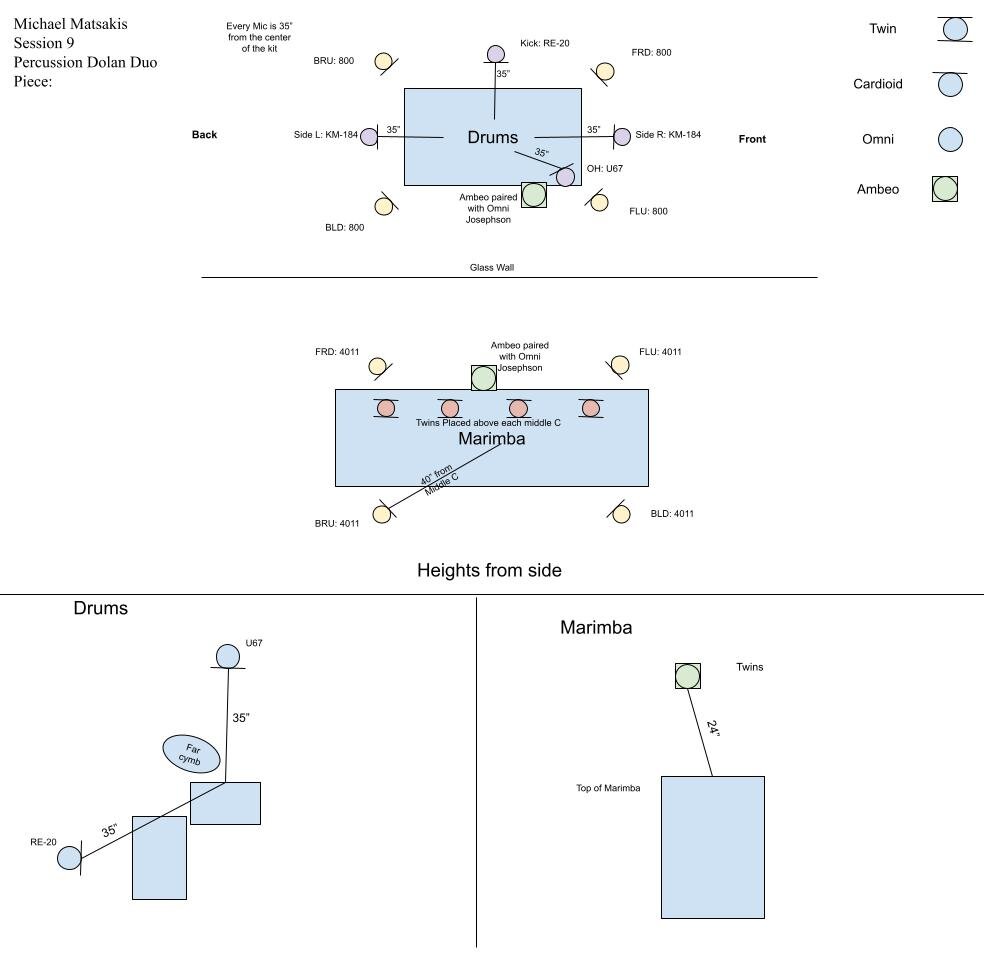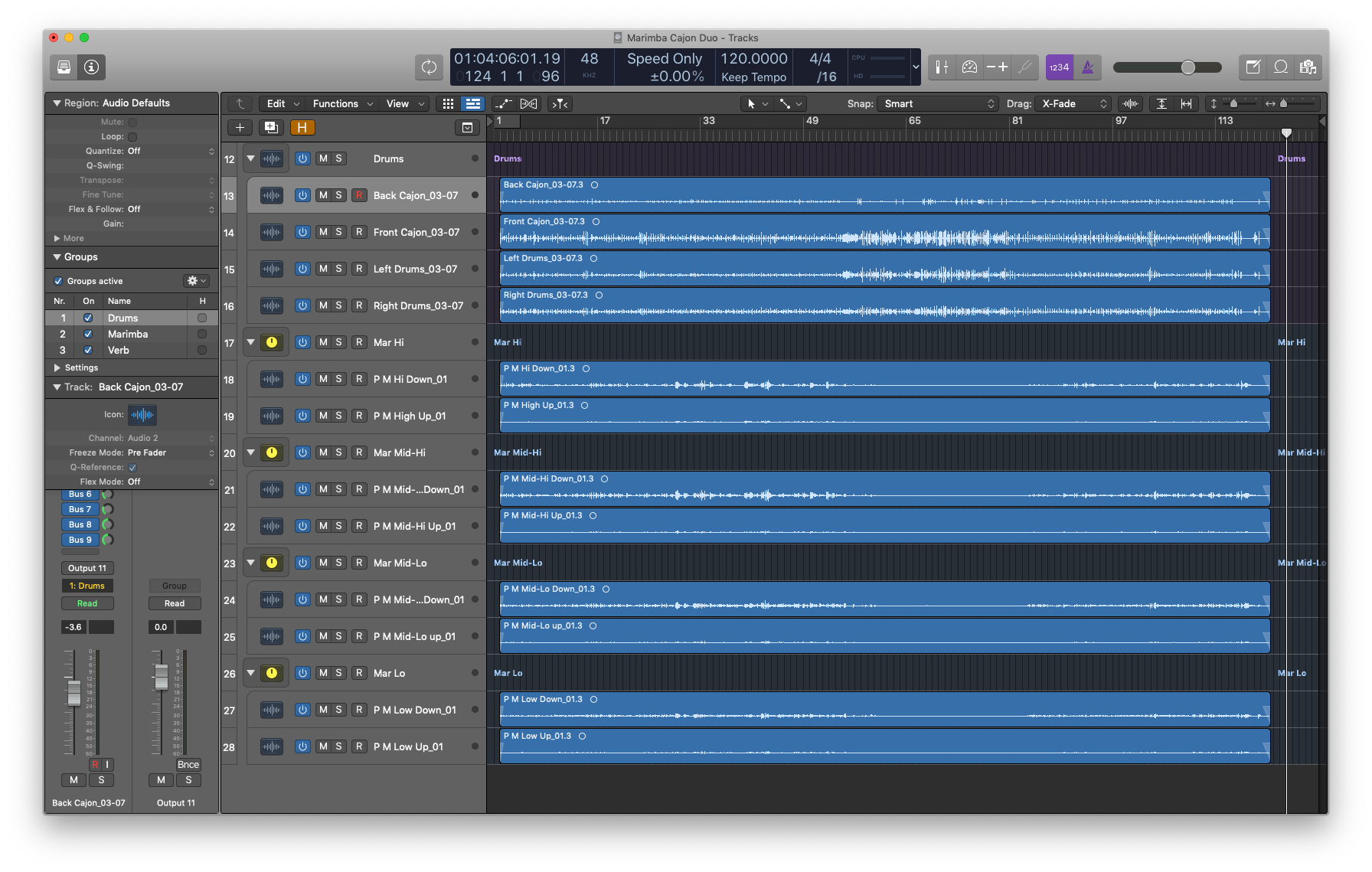Marimba & Drum Set
This was our second attempt at implementing multi-microphone techniques to capture radiation patterns of instruments for assembly in a virtual environment where the user has all six degrees of freedom. In this session, we tried a similar technique to the violin/viola duo with placing the four microphones in quadraphonic speaker positions (Michael Gerzon): Front Left Up, Back Left Down, Back Right Up, Front Right Down. We tried this for the drum set and marimba. The isolation of the two instruments proved to work better, when compared to the string duo recording, which was done not-isolated in a theater.
We also tried another set of microphones on each instrument. On the drum set, we had four cardioid microphones placed at 90º from each other, equidistant to the center of the kit: A U67 above the snare/crash, two KM-184s placed respectively on each side of the kit, and an Re-20 in the back pointed into the hole of the cajon.
For the Marimba, due to its width, four Sennheiser MKH 800 Twins were placed respectively above middle C down the length of the instrument. They were all essentially tuned to hyper-cardioid in the mix.
The ambisonic/omnidirectional spot microphone technique was also used in this session although I didn’t end up using it for these mixes.
You can experience the Holographic Sound Recording Here on my itch.io page.




Thoughts on Unity Rendering
After the mix was done with adequate processing, the radiation capturing microphones were then exported to stems. I created a 3D environment in Unity and used Google Resonance to spatialize the recording, giving the listener six degrees of freedom. What I found when doing this, is that the quadraphonic micing techniques proved to not be as good as the other system on the drum set. While for the marimba, a combination of the two seemed to work well.
Marimba and Drum Set Rendered in Unity
After messing around a lot and listening to the difference between the two systems, I’ve come to this ideology as to how to capture radiation characteristics for recordings with six degrees of freedom:
One music use both their knowledge of what sounds good in terms of microphone placement, as well as angles in which microphone patterns become de-correlated. Using these two principles, one should place enough microphones around the sound so that the all directional characteristics are captured with the most de-correlation between signals and best timbre possible. A mix of this ideology and common sense regarding the radiation characteristics of the instrument should give engineers a great starting place when attempting to mic radiation patterns for six degrees of freedom recordings.
Marimba Wavefront
In the case of the Marimba, both the Sennheiser MKH 800 Twins and the quadraphonic mic techniques combined worked due to the larger size of the instrument. The Twins helped capture the definition of the player moving up and down the keyboard, while the ambisonic microphones captured more of the indirect sound coming off the sides of the instrument.
Marimba Reverse Tetra Microphone Rendering
Reverse-Tetra Rendering of Drum Set
For the drum set, the quadraphonic microphone setup proved to sound spacey and indirect when compared to the more thought out four microphone placement. And due to the angle between the two systems not being great enough to create de-correlation, the combination sounded phasing out and unnatural. The four cardioid microphones placed at 90º, equidistant from the center of the kit had the best combination of timbre (from their placement) and de-correlation (from their respective angles).
90º Quad-Miking Rendering of Drum Set (Top Down View)
